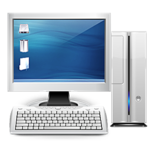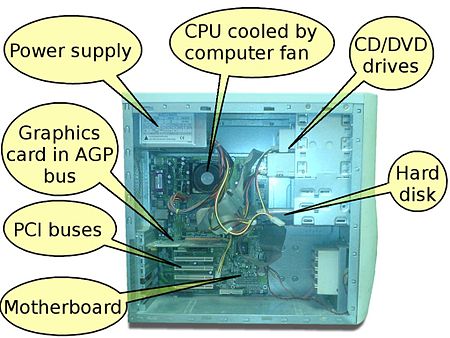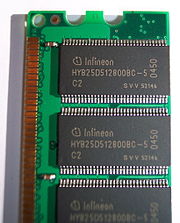Computer Basics/Hardware/Processing and internal memory devices
| Computer Basics | |
|---|---|
| Hardware | Introduction | Hardware and software | Types of hardware | Input devices | Processing and internal memory devices | Output devices | Storage devices | Interaction of hardware devices | Key points | Assessment |
Processing and internal memory devices
Prcessing devices
Processing devices are used to process data using program instructions.
| Processing devices | Function |
|---|---|
| The Motherboard
The PC‘s main printed circuit board which is located inside the System Unit. |
|
| CPU - Central Processing Unit
The CPU is a silicon chip which contains thousands of electronic circuits. Has a fan to keep it cool. The chip is also known as a microprocessor. |
|
Internal memory devices
RAM (Random Access Memory) is an internal memory device which temporarily holds data and instructions while processing is happening. If the CPU is the “brain” of the computer, then RAM is the “working memory” or "thinking memory" used to store data just for the programmes and applications being used at that time. Once you close the program it is wiped out of the RAM, but stays on the hard drive (long-term permanent memory).
| Internal memory device | Function |
|---|---|
| RAM - Random Access Memory
A series of chips on the motherboard. |
|



